Astrolabe 24: You play. I play. Cosplay.
Before opening this issue, I want to acknowledge the ghastly decision by the Supreme Court of the United States to overturn Roe v. Wade—turning over the right to bodily automony for women and childbearing people to state control and effectively banning and/or criminalizing abortion in large parts of the United States.
As a Canadian, I feel powerless to help those directly affected by this assault on human rights. If you feel similarly, I recommend seeking out charities actively working to support those in need of an abortion and fighting for the human rights that have been violated by a partisan and political court. If you're able, please consider donating to a charity like the ACLU to help protect rightful access to free and safe abortion.
Thank you.
A History of Cosplay with Andrew Liptak
Dressing up and using your imagination to transport into the world of your favourite book, film, or video game is a time honoured tradition. It's a rite of passage for childhood, and a creative platform for a vibrant community enjoyed by millions of children, teens, and adults around the world.
It's called "cosplay," and its rich history is explored in Andrew Liptak's new book, Cosplay: A History. I caught up with Liptak, a longtime friend, to discuss his book, the origins of cosplay, and to learn how childhood play helps shape adulthood imagination.
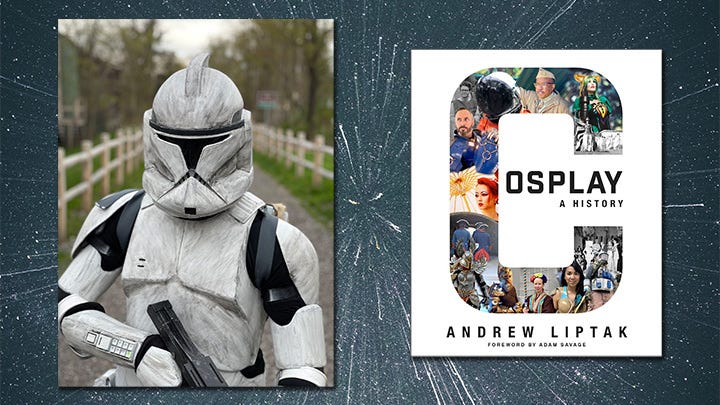
Cosplay: A History
"It goes back to Star Trek becoming a phenomenon in the '60s," Liptak explained to me. But above and beyond the familiar presence of cosplayers appearing at Star Trek conventions, he wanted to dive deeper into cosplay history for his book, back before Forrest Ackerman and WorldCon popularized the concept, before Jules Verne held a costume contest at his home.
"Why do we use costumes in the first place?" Liptak asked. "I really get to the root of that."
Liptak believes a big part of the answer is that humans are natural storytellers. "We like stories, we like using our imaginations, sharing those experiences, and bringing new fidelity to them," he said. Imagine you're sitting around a campfire, he explained. You're telling a scary story, so you place the flashlight under your chin, splashing your face in shadow, you grab a stick or stone nearby as a prop. All of these little things add to the immersiveness of the story, and cosplay is another way to bring those stories to life. "We like these stories," he finished. They mean so much to us—so we want to share those emotions with others.
Over Zoom, Liptak described to me his labyrinthine path from young Star Wars fan to hobbyist cosplayer to journalist covering the ins-and-outs of the cosplay community and how to make your own Stormtrooper armour. As he did so, he painted a picture of cosplay's own journey from experimental, imaginative play among children and adults to a vibrant worldwide community.
When Liptak first saw Star Wars in the late 90s, he was immediately drawn to the series' Stormtroopers—who are recognizable to even non-Star Wars fans thanks to their stark white armour and iconic helmets. By 2003, he'd acquired a set of armour, and within a few years had connected with fellow fans and joined a "troop" dedicated to Star Wars cosplay.
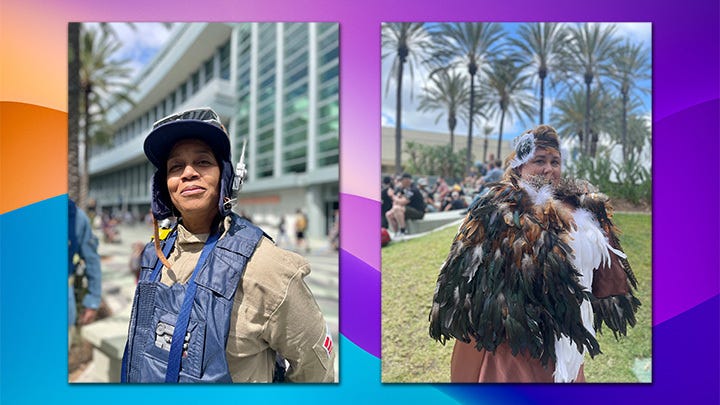
Cosplay: A Community
Though he explained in detail the effort that goes into crafting many of his costumes, Liptak stressed that the heart of cosplay is not the costumes themselves, but the community that has grown up around them. It's often been tied to more traditional science fiction and fantasy fan conventions, but is also developing its own spaces and practices as the community grows. Conventions and similar fan gatherings are the perfect opportunity to show off all the hard work, imagination, and craft, but they're also a place to meet other cosplayers, to make friends, and to be part of something special.
Over 15 years after first dressing up as a Stormtrooper, Liptak is now a member of the 501st Legion, an international community of cosplayers and Star Wars fans who regularly attend events and leverage their love of Star Wars to promote the franchise, encourage creative cosplay, and give back to communities around the world through fundraising, charity, and volunteering. They may look like Stormtroopers, but they're shooting love and happiness, not poorly-aimed laser beams. Through the 501st Legion, Liptak has taken part in charity events, escorted Snoop Dogg through Times Square in full Stormtrooper armour, and appeared on The Today Show.
"Some fans are content to collect action figures...other fans want to be action figures," states the official website for the 501st Legion, getting to the core appeal of cosplay.
The most impressive costumes go viral online, but there's more to it than expensive handcrafted pieces. Imagination and enthusiasm are essential at all levels engagement—whether that's figuring out how to fit a face mask into a costume that wouldn't traditionally be masked, or kids playing at home with the supplies they have on hand.
I recalled the time my mom and her friend made stuffed Teenage Mutant Ninja Turtles shells for me, my brother, and our two friends for Halloween. Cut holes in strips of coloured fabric, and suddenly we were Leonardo, Michelangelo, Raphael, and Donatello. We wore those costumes well beyond the holiday. We wore them until they were threadbare and broken. We didn't call it cosplay, but the shared experience of dressing up as the Turtles and clobbering the Foot Clan glued us together through play, imagination, and shared fandom.
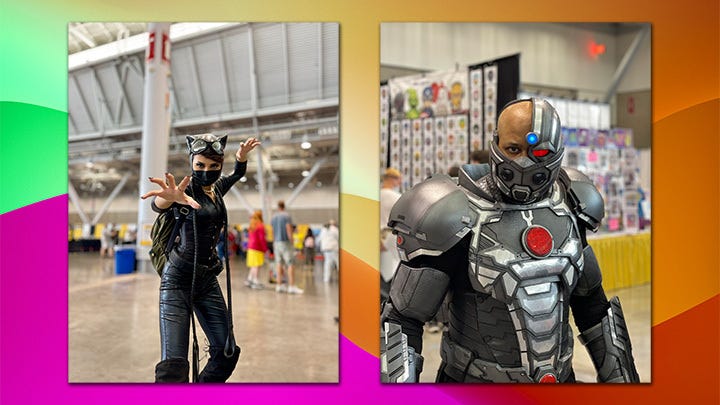
Cosplay: A Beginning
Liptak grinned as he told me about the painstaking work that went into crafting a set of Stormtrooper armour for his three or four year old son Bram a few years ago. Adapted from a toy, it was something far above and beyond what most kids used for dress up or play. The stuff of dreams.
"He wore it for 15 minutes," Liptak laughed. It was "too pinchy," and he didn't wear it again. "Whole months of work down the drain."
For Liptak, cosplay is a family activity, and his son Bram, now nine years old, has been donning costumes for years. Listening to Liptak's story about the pinchy Stormtrooper armour, one thing became clear: there's no wrong way to cosplay. For some people, the end goal is fidelity—costumes so real they could've walked off the set of the film—for others, it's the emotion and feeling of connecting with the stories they love, and being transported there through simple costumes sewn by their mom or gathered from a closet.
"I think it's really important that adults play," Liptak said. Adults can bring a lot of realism to their costumes, and that can be fun, but it's not the only way to do it. "Kids will play with anything," he continued. "I certainly remember whacking away at trees with a stick thinking it's a lightsaber."
It's never been easier to get started with cosplay, Liptak said. But not because of new possibilities afforded by fabrication technologies like 3D printers (though those obviously help), but an entirely different realm of technology: social media.
"You've got platforms like YouTube, forums, and Facebook groups that provide a lot knowledge," he explained. "It connects people."
And at the end of the day that's what cosplay is about: connecting people. Cosplay brings new worlds to life, and introduces your friends, family, and fellow fans to the characters you love. It transports you to a new world, and lets you bring anyone along for the ride.

Cosplay: A History by Andrew Liptak is available now from Saga Press. Andrew Liptak can be found on Twitter and his website, and you can subscribe to his newsletter Transfer Orbit.
Out & About
(Out & About is where I highlight my work around the web—some recent and some old favourites.)
The Best Ways to Play Vintage Games on Your Modern TV — lifehacker.com Because there's never been a better time to go retro.
My latest feature for Lifehacker has been a long time in the making. There are so many ways to play old games that it can be a little daunting to figure out what's right for your situation. In this piece, I break down the major choices—emulation, original hardware, FPGA, official platforms—and provide a run down of what to expect, potential costs, and high end features so you can figure out the best way to play Turtles in Time on your 4k.
So, you want to play retro video games? Excellent. Whether you’re exploring old favorites or digging for new treasures, there’s a huge library of titles out there waiting for you. Some retro enthusiasts (like your dear author) will fall down the rabbit hole of era-appropriate hardware— original consoles, game paks, and CRTs—but not everyone wants to deal with those hassles (or costs). Fortunately, playing retro games on your flatscreen can be just as beautiful and satisfying as lugging a 120-pound CRT up three flights of stairs to your apartment.
I’m going to break down your options—whether you’re using an old 720p LCD or a 4K HDR OLED—to ensure you can get started gaming, no matter your setup or budget. There are all sorts of options, so I’ll start with the most affordable (emulation) and move toward the more expensive “enthusiast” options. Whichever you choose, the only thing that matters is that you have fun.
It's been several years since I got back into retro gaming via a free, easy-to-download emulator on my computer. Since then, my retro gaming tools have expanded to include FPGA consoles, original hardware, more emulators, and everything in between. There's no wrong way to play old games (unless you're stretching them to 16:9...) as long as you're having fun.
Read "The Best Ways to Play Vintage Games on Your Modern TV" on Lifehacker
LTTP—Legend of Mana (PlayStation, 1999)
( LTTP stands for “Late to the Party” and is a regular column where I let Twitter decide which retro game I’ll play for an hour. Do your worst, Twitter!)
Because representational democracies are apparently so last century, this issue's LTTP game was selected by a committee of one: me. As a huge fan of Secret of Mana growing up, I missed out on its PlayStation sequel, Legend of Mana, due to the deluge of other amazing JRPGs on the console. But, I've always wanted to give it a fair shake, just to experience its gorgeous world. Since I recently acquired a copy of the PlayStation original, and have the new remaster on Switch, I'm going to look at both versions broadly, since they share many of the same strengths (audiovisuals) and weaknesses (combat.)
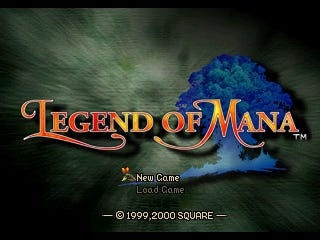
The Good
Um. wow. Few games of any generation have featured such finely crafted audiovisuals in a single package. Its S-tier pixel art graphics are incredible—lush, colourful, and full of character and wonder—and yet they're still somehow surpassed in quality by Yoko Shinomura's timeless and expansive score. This is a world that begs exploration, surprising and delighting with each new area, and leaving you feeling adventrous and haunted, melancholy and excited with each new musical track. Trials of Mana pushed 16-bit pixel art to the limit, but Legend of Mana is on a whole other level.
Like its predecessor, the only knock against the visuals is that the expressive and detailed character sprites lack equally impressive animation cycles, leading to awkward, jerky movement that grates against the otherwise pristine graphics.
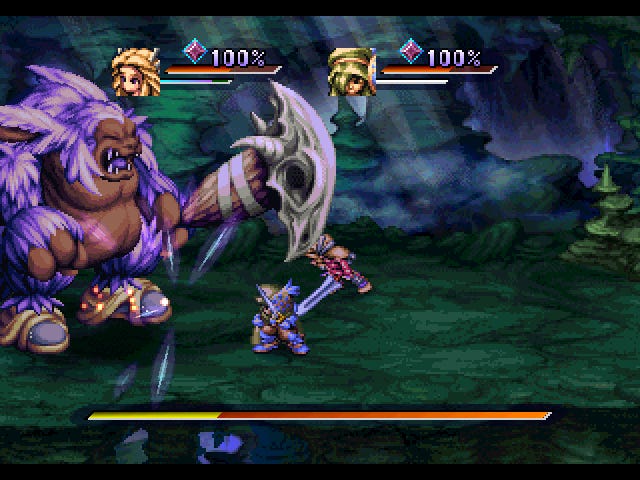
The Bold
Secret of Mana was a pretty straight forward action JRPG. It had a few optional deviations, but for the most part every playthrough was more or less the same. Trials of Mana switched this up by having three major plots, six selectable characters each with their own background and sub-plots, and a nonlinear-ish structure later in the game. Legend of Mana goes well beyond that with new systems build around sidequests and map building.
Instead of having a preset world, the player places "Artifacts" around the world map. These determine the location of dungeons, towns, and other sites of interest, all of which interact with an element system that changes the experience depending on where you've placed everything. It's heady, weird, but curiously interesting and offers a ton of replayability and customization.
Add to this a complex crafting system, pet raising, and a lot of character customization options, and you've got an experience that feels almost wholly new compared to the Mana games before it. I've always looked at Legend of Mana as the point where the Mana series started to experiment to its own detriment, with the bad ideas beginning to equal or outweigh the good, but Legend of Mana's world-building and customization is genuinely compelling on its own.
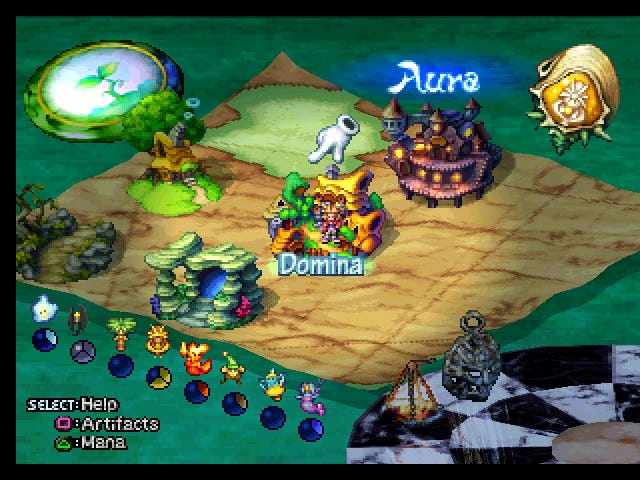
And The Ugly
How can a game that gets so much right in the audiovisual department, with a strong lineage of fun game play, feel so, so bad to play? Where Legend of Mana sets new standards for pixel art, world design and music, continuing to establish the Mana series as one of the best in all of gaming, its combat, player movement, and gameplay loop are a huge regression compared to earlier games.
While the build-a-world mechanic is genuinely fun and interesting, the free-roaming combat has been replaced by a combat system that feels more like a belt-scroller (think Double Dragon) than an action RPG. Combat occurs in small, closed combat arenas (similar to the change seen in Trials of Mana), and the player is limited to making attacks left and right, the timing of attacks is clunky, movement is slow, and feedback for successful hits is hard to sort out. It's just... bad. Previous games in the series weren't known for top-tier combat—they've all got their issues—but this is the first game in the series where combat is a net negative for the overall experience. A major issue in a game based around combat and exploration.
Oh, and there's a super racist rabbit who wants to commit genocide against Sproutlings and Flowerlings. So, that's weird in a bad way.

Legend of Mana was released in July, 1999 for the PlayStation and is available in emulated form on the PlayStation Network for PSP, PS Vita, and PS3. A remaster with updated visuals and quality of life features was released for major consoles and smartphones in 2021.
Recommended Reads
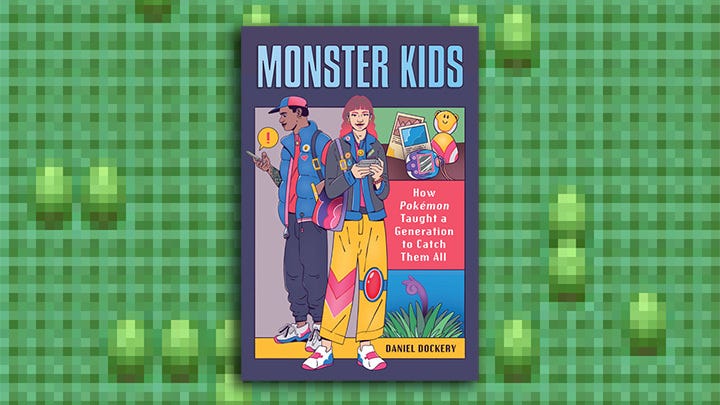
Monster Kids: How Pokemon Taught a Generation of Catch Them All by Daniel Dockery
This October 4th, my book Fight, Magic, Items hits shelves and dives deep into the history of Japanese RPGs and their rise to popularity in the west. The very same day, my friend Daniel Dockery's book, Monster Kids: How Pokemon Taught a Generation of Catch Them All also comes out! Like my book, Monster Kids delves into childhood, major cultural shifts, and how a young Satoshi Tajiri turned a childhood fascination with insects into a worldwide phenomenon.
Since Daniel and I share a publisher and editor, I've had a chance to read an early copy of this, and, y'all, it's good. Real good. Daniel's rich history with the series, enviable ability to tie personal experience into larger cultural moments, and top-tier reporting make this a must read not just for Pokemon fans, but for anyone with a passing interest in the rise of Japanese culture in the west. It's a careful, meticulously researched history that helped me appreciate some of my favourite games in entirely new ways.
Get Monster Kids: How Pokémon Taught a Generation to Catch Them All
Quest Markers
(Quest Markers is a collection of the coolest stuff I’ve read around the web lately.)
- The Priest of Japan’s Forbidden Zone (Vice)
- Our World Must Embrace Neurodiverse Children Like Mine (Parents)
- China Miéville: “If you don’t feel despair, you’re not opening your eyes” (The New Statesman)
- Final Fantasy Is about Guys (Paste)
- Why Are So Many Fantasy Novels Published As Trilogies? (Adam Roberts)
- The Real Stars of the ‘Jurassic’ Films? Friends, Not Dinosaurs. (New York Times)
- It’s the End of a Pokémon Era (Wired)
- ‘Unfadeable’ author has long been helping kids find their voices (Washington Post)
- The Superficial Diversity of Canadian TV (The Walrus)
- MTG cares more about collectability than accessibility - and it’s making the TCG worse (Dicebreaker)
- Talking with the amazing Lena Raine about composing for games (GoNintendo)
- What It's Like to Design a Historical Strategy Game in Early Access (Waypoint)
- Throwback Thursday: Mixed-Up Mother Goose Was Mixed-Up Magic (Fanbyte)
- Pokémon Crystal Unlocked My Trans Girl Heart (Wired)
- Meet the Viking merchants of the internet (The Verge)
End Step
Be kind to yourselves, y'all. Grab a good book, sink into a good game, grab a cuppa, and breathe.
Support
There are lots of ways to support Astrolabe and my other work. Check ‘em out!
Keep In Touch
Enjoy Astrolabe? Want more SFF and retro gaming goodies? You can find me on Twitter and my website.
Credits
Astrolabe banner photo by Shot by Cerqueira on Unsplash


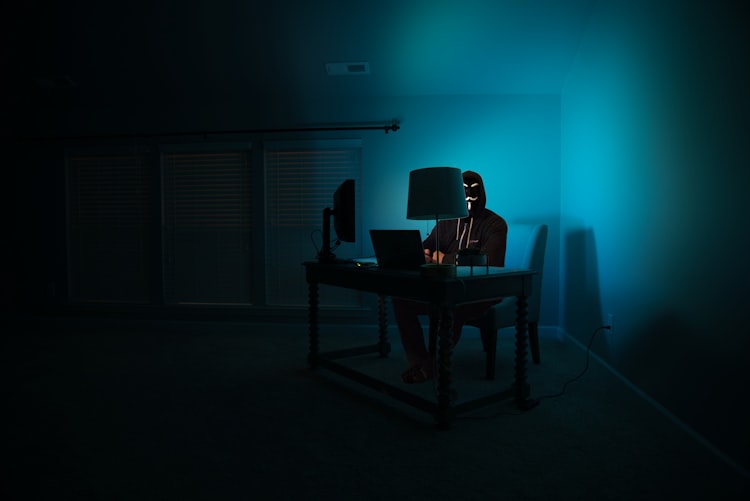
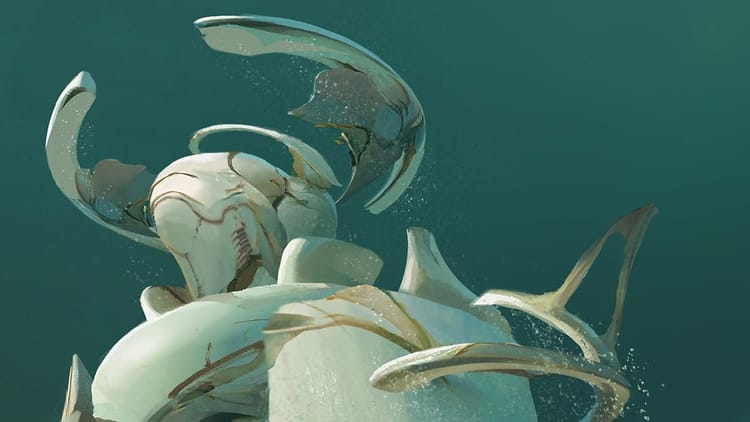


Member discussion